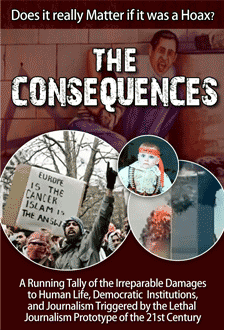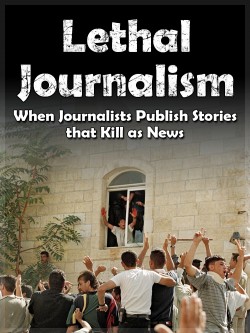The Al Durah Project Goals
The Al Durah Project’s particular mission is to critically examine the incident and understand it as part of a larger process of reporting Palestinian Arab lethal narratives as news.
This website is the work of a small group based in the UK, France, the United States and Israel. We formed ourselves into the Al Durah Project in 2012. The initiative was triggered by events that occurred in 2000 when a video clip purporting to show a 12 year old boy and his father (Al Durah is their family name) under fire in Gaza went viral on television news programs around the world.
More than 12 years have passed since the events depicted in the Al Durah incident. That is certainly a long time in terms of a news cycle. But along the way the video morphed into something iconic and enduring, with devastating effect in terms of lives lost and ruined. Today it remains alive and potent.
During May 2013, the Court of Appeals in Paris will hand down its decision in a case that pits state-owned France 2 and its senior news producers against an energetic and determined media critic, a private citizen, whom they seek to convict of criminal defamation. It’s an extraordinary legal action that has beenwinding through the French legal system for eight years.
The issues at the heart of the matter go well beyond those being litigated in the court and significantly affect the world outside France. We believe this case showcases an attack on bedrock values including the freedom to criticize the news media which have, for reasons well worth considering in detail, allowed themselves to become a major weapon in an asymmetric war waged against the very society and values that make a free press possible.
People who view the video clip packaged and distributed by France 2 in September 2000 are often convinced they are witnessing the horrible and senseless killing of a child. That is what the voice-over tells them; that is what most people believe today. Since its first appearance as a news report, the imagery of the boy cowering beside his father has been turned into countless posters, murals, online music videos, poems, songs, postage stamps, even fashion dresses. It has become an icon of hatred that inspires rage, a desire for vengeance, and passionate loathing of the State of Israel, held responsible for the child’s death.
Nor was Israel the only target. Palestinians who wanted peace and had participated in dialogue with Israelis found that no one and nothing could stand in the way of a takeover of a culture of death and the launching of the destructive and self-destructive “Al Aqsa Intifada”, and Europeans, who repeatedly ran this footage, unwittingly empowered radical elements within their own Muslim populations.
In terms of cognitive warfare – the theater of war of predilection for the weak side in an asymmetric war – al Durah was a nuclear bomb exploded against Israel. And the Western mainstream media served as its delivery system.
The television footage of an allegedly murdered child continues to be invoked over and again as justification for violent deeds. The French jihadist Mohamed Merah ascribed his killing spree in Toulouse in March 2012 to a will to avenge the Palestinian children killed by Israel. He demonstrated that a society exposed to narratives of children deliberately killed by a hated ‘other’ will produce men like Merah who kill Jewish school-children to avenge these journalistic accounts. Beyond this, it nourishes deep resentments that engender support and admiration for the “avenger”, lionizing him as a martyr for the act of child-killing and for the blows he strikes against authority.
And yet, nothing is as it seems. There are so many problems with this story, so many ways that the footage itself contradicts the narrative, that it is not even clear whether the boy died, much less that Israeli fire killed him. Indeed for those who look at the evidence closely and dispassionately, it seems clear that, at least in the footage we see, by the end the boy is still alive and rather well.
And yet the mainstream news media, in addition to its initial credulity about the claims made by both the Palestinian cameraman who filmed it and the France2 Middle East correspondent who reported it, has stubbornly resisted any serious reconsideration. Indeed, in a frightening inversion of the role journalists should be taking, France’s union of media professionals, the Syndicat national des journalistes, stands behind Enderlin, the video clip’s producer. It has actively supported France 2’s sustained attack on the media critic and his pesky questions for eight years.
On this website, we are assembling a collection of materials and references that deal with the shooting, its aftermath and the ongoing impact of the Al Durah myth. It is an evolving resource that we hope will serve those ready to undertake fresh analysis. We trust and believe you will find it helpful to the process of understanding the dilemmas and vulnerabilities that face democratic cultures in this age of aggressive asymmetric warfare.



